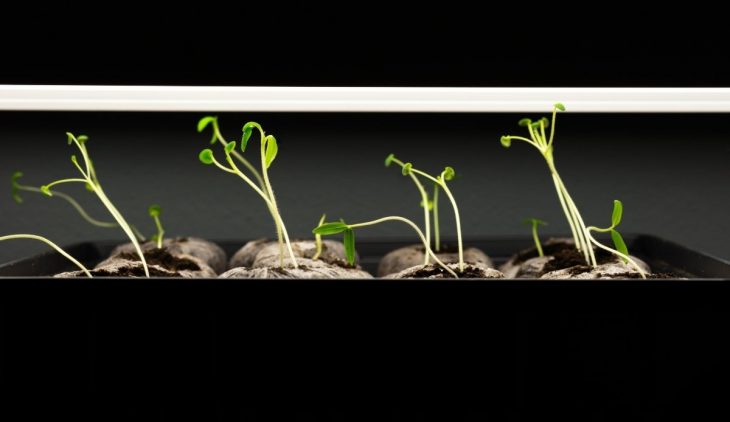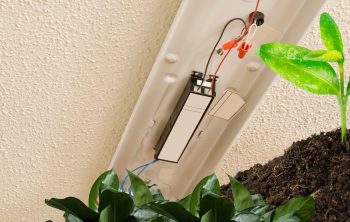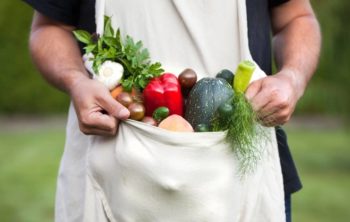CFLs are one of the most common grow lights used among indoor growers. It is the wish of every grower to satisfy the lighting needs of their plants. So, if you want to know how many CFLs are required per plant, we will let you know in this post.
Now, we can’t just answer this question without obtaining more about your garden information. We will require some information such as the wattage of the bulb, the size of each of your plants, and grow room size.
So, keep reading to learn how many CFLs are required per plant.
Growing With CFLs Light
Indoor gardening with compact fluorescent light (CFL) bulbs is a nice source of light supplements you can provide your plants. They will offer your plants awesome growing benefits such as affordability, easy to use, minimal heat, consumes lesser power, and so on. With CFL lights, you can be sure your plants receive the appropriate light wavelengths for them to flourish.
The compact fluorescent light bulb does not emit too much heat, unlike the conventional incandescent bulbs or fluorescents. However, they only supply moderate light intensity in contrast to sunlight. Therefore, your plants may need multiple bulbs for your plants’ growing needs.

How Many CFLs Is Required Per Plant
Like we said earlier, we need to know the plant size and bulb wattage to determine how many CFLs are required per plant.
The general standard we use in determining the plant’s lighting requirements is the plant size and it is measured in square feet. If we know the square foot of the plant size, we can deduce how many CFLs are required per plant. Also, it’s better to answer this question using square feet of space rather than how many plants.
How Many CFL Watts Per Plant?
How many CFL watts per plant are around 60 to 100 watts per square foot. This is ideal especially for high light demanding plants. You can however go a bit higher even as high as 150 watts. We recommend these values for the flowering phase.
When considering the vegetative phase, seedlings phase, or cloning, you can use half of this value for your plant’s growing needs. This value can as well be used for low light-demanding plants.
In a similar fashion, when we’re looking at about 2 to 3 plants which usually contain 1 square foot, then 150 wattages or less will be required.
Actual Wattage vs. Listed Wattage
Most grow lights usually have two different wattages: the actual wattage it draws from light and the wattage listed by the manufacturer.
For instance, if you see your CFL grow light labeled 500 watts, that’s not the actual wattage consumed. If you dig through and search your package, you will find the actual wattage used. Usually, if it’s stated that a grow light is 500 wattages, it may actually consume just about 150 or 200 wattages.
The labeled 500 watts is the amount the grow light offers while consuming lesser power. This implies you get more output with lesser power consumption.
Therefore, when you are considering how many CFLs per plant are required, focus on the actual wattage, not the labeled wattage.
Durolux DL822N T5 HO 2Ft 2 Fluorescent Lamps Grow Lighting System
Extra Tips
As we mentioned earlier, CFL grows light only supplies moderate light intensity. Thus, if you want to get more light intensity, you may need to use multiple bulbs.
This is why CFL grow lights are ideal for only small plants. When you start using 10 or even 5 bulbs to attain that better lumen, you may have to put in extra work by readjusting the lights as your plants develop.
So, when you decide to plant more than one or two plants, we recommend you obtain an affordable LED grow light or a T5 fixture to ease the stress.
CFL Grow Setup
There is an ideal way to set up your CFL grow light so your plants can get adequate light intensity for their growing needs. Your CFL bulbs should be positioned on every side so your plants can receive good lightning. You can place the CFL grow light close to your plants because they are safe and will not emit too much heat.
For seedlings, you can position your CFL grow light at least an inch away from your plants. Once they begin to grow, you should move them a little farther from the plants. Ideally, for bushier and short plans you can place your CFL grow light close to the plants. On the other hand, for taller plants, the CFL grow light will need to be positioned farther away as the plants grow.

However, you can do a test using the back of your hand to feel the heat emitted from your CFL grow light. Place your hands between your plants and grow light for about 20 seconds. When you notice it feels hot, push the grow light a little further from your plants to avoid burns. On the other hand, if the heat is minimal on your hand, then it’s safe at that distance.
Generally, the recommended distance around 2 inches to 4 inches. Also, you want to always keep a close watch on your plants and how they receive the grow lights. As they grow taller, it is ideal you continue to move the grow light away from them.
FAQ’s
What CFL light is best for growing?
There are many options for CFL light bulbs. CFL stands for compact fluorescent lamp, a bulb that emits a similar amount of energy as an incandescent bulb but uses less power and produces a brighter light. There are several types of CFL bulbs available, including standard CFL bulbs, daylight CFL bulbs, energy-saving CFL bulbs and LED bulbs. All CFL bulbs produce the same amount of light, but some have a longer lifespan than others.
The most powerful CFLs are the ones with the most lumens, so a 100W light bulb would be better than a 25W bulb. A lot of the higher wattage bulbs do not have as much lumen output as lower wattage bulbs, but some of the higher wattage bulbs have more color spectrum than lower wattage bulbs. For example, the 100W bulb may have a little more red light, while the 35W bulb may have a little more blue light.
I prefer warm white CFL bulbs (2700K) but I've also seen people say they work well with cooler CFLs. I've also heard of people using CFLs for other things like making tea or cooking. I would assume that CFLs would be best for those uses, but they don't seem to be much different from the incandescent bulbs that are usually recommended for growing plants.
How many CFLs are needed for seedlings?
It's easy to calculate the number of CFLs needed. Let's say the number of square feet of your seedling room is 10' x 12'.
The number of CFLs needed is:
10' x 12' x 1/4" = 120 square feet 1 cubic foot of seedlings = 240 seeds, so the number of CFLs needed is: 240 x 1/4" = 60 square feet So you'll need at least 60 square feet of CFLs to cover the seedlings.
If you're talking about seedlings (like lettuce) and not plants, the answer is two per plant. For example, I have 2-4 seedlings per plant in a 1 gallon pot. In the case of seedlings, they're usually grown in flats with two per flat. They can also be grown in individual pots, but that's more of an exception than a rule.
What kinds of works well with CFL’s?
For seeds I would recommend using a CFL with an output of 150 watts or less (150W, 75W, 35W, 15W, etc.). This is the minimum for a CFL bulb to provide enough light for plant growth.
How far away should CFLs be from plant?
You want to keep them anywhere between 4 to 6 inches away from your plants. If you put them any farther away they won't receive enough to grow properly.
We have concluded that how many CFLs watts per plant required is about 150 watts or less per square foot. CFL lights will produce less heat making it safe to be placed close to your plants. Therefore, they are especially great for tight space.
They are affordable and easily accessible. However, their light intensity does not do so great. Additional bulbs may be required to achieve the required light intensity. They are also not ideal for a large setup but great for a small setup.
Having said all this, we believe you will have excellent plants result growing with CFL grow lights.

Eunice is an enthusiastic gardener with a passion for growing beautiful flowers. She loves nothing more than spending time in her garden, tending to her plants and enjoying the outdoors. Eunice has been gardening for over 15 years and has developed a unique style of landscaping that is both practical and aesthetically pleasing. She is especially fond of growing roses and enjoys experimenting with different varieties and colors. Eunice takes great pride in her garden and often shares the fruits of her labor with friends and family. In her spare time, she enjoys reading gardening magazines and attending local horticulture events. Eunice is passionate about her hobby and is always eager to share her knowledge and experience with others.





